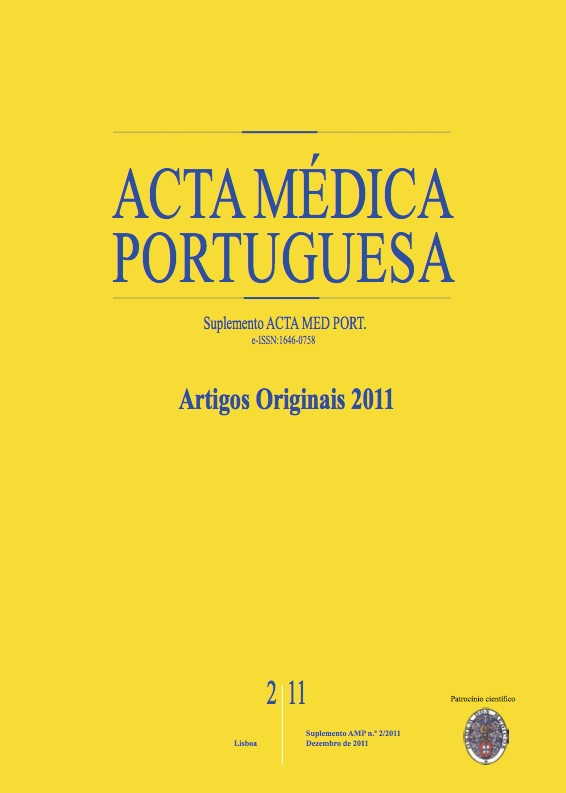Subocclusive transvenous approach of dural arteriovenous fistula.
DOI:
https://doi.org/10.20344/amp.1528Abstract
Dural arteriovenous fistulae (DAVF) are usually acquired and when presented with cortical venous drainage are associated with high risk of hemorrhage. They can be treated by arterial or venous embolization, by surgery or by the combination of both techniques. Transvenous approach induces venous sinus thrombosis increasing the risk of venous stroke and/or hemorrhage.Review of all the cases of transvenous embolization of lateral sinus arteriovenous fistulas treated in our department. Our main objective is to evaluate the clinical/imaging results of this treatment and the second goal is to discuss possible advantages of the subocclusive approach in the first session of transvenous treatment.The authors present six clinical cases of DAVF with the following clinical symptoms: visual disturbances (3); ear pulsatile bruit (3); headaches (2); subarachnoid hemorrhage (1); subjective hearing loss (1); optic disc edema (1); hemiparesis (1). Angiographic classification was: Cognard IIa, (3), IIab (2) e IV (1), all of the lateral sinus. The main afferent branches arised from: ipsilateral ECA (6); ipsilateral ICA (6); ipsilateral VA (6); contralateral ECA (5); contralateral VA (5); contralateral ICA (3); ipsilateral PCA (1). Transarterial approach was the first approach in all patients with satisfactory but transient results. It was always followed by transvenous embolization of the lateral sinus with GDC coils. Subocclusive approach was achieved in five patients with the persistence of some afferent arteries. Follow-up angiography in four of them showed "spontaneous" thrombosis of the lateral sinus with clinical and angiographic cure. Thrombosis occurred once during the initial transvenous procedure. There were no complications or new neurological signs or symptoms in any patient.Transvenous treatment of DAVF has led to technical and clinical success without procedure complications. We think that subocclusive approach of the venous sinus with coils can cause less hemodynamic changes with a slower thrombosis rate and less complications, unchanging the angiographic and clinical resolution.Downloads
Downloads
How to Cite
Issue
Section
License
All the articles published in the AMP are open access and comply with the requirements of funding agencies or academic institutions. The AMP is governed by the terms of the Creative Commons ‘Attribution – Non-Commercial Use - (CC-BY-NC)’ license, regarding the use by third parties.
It is the author’s responsibility to obtain approval for the reproduction of figures, tables, etc. from other publications.
Upon acceptance of an article for publication, the authors will be asked to complete the ICMJE “Copyright Liability and Copyright Sharing Statement “(http://www.actamedicaportuguesa.com/info/AMP-NormasPublicacao.pdf) and the “Declaration of Potential Conflicts of Interest” (http:// www.icmje.org/conflicts-of-interest). An e-mail will be sent to the corresponding author to acknowledge receipt of the manuscript.
After publication, the authors are authorised to make their articles available in repositories of their institutions of origin, as long as they always mention where they were published and according to the Creative Commons license.









